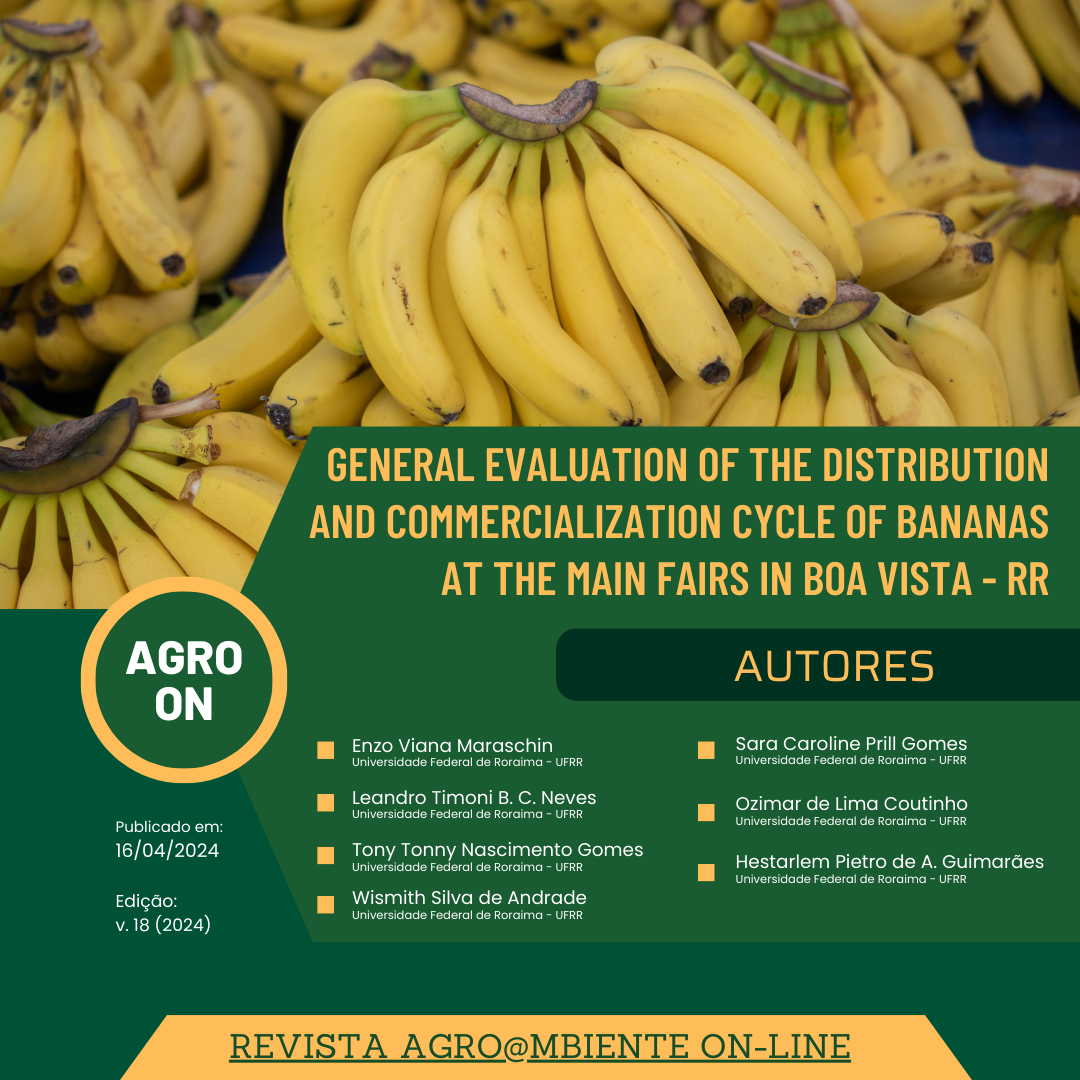General evaluation of the distribution and commercialization cycle of bananas at the main fairs in Boa Vista - RR
DOI:
https://doi.org/10.18227/1982-8470ragro.v18i00.8135Palavras-chave:
Mechanical Damages. Musa spp. Postharvest.Transport.Resumo
In Roraima, banana cultivation is a significant socio-economic activity aimed at catering to both the domestic and regional markets. The banana-producing region (Musa spp) is concentrated in the southern part of the state, encompassing the municipalities of Caroebe, São João da Baliza, and Rorainópolis. Thus, the objective was to assess fruit damage and investigate severity and causes. The cultivars selected for the study were ‘Pacovan’, ‘Prata’, and ‘Missouri’. Five markets were visited for the study, with eleven points of sale sampled at each market. At each sampling point, newly arrived batche (bunches) was collected at three distinct times. The variable studied was the incidence of fruit damage at different ripening stages (type 2 and type 7). Data collected visually were subjected to Likert analysis and descriptive statistics. The results showed that mature bananas exposed directly on tarpaulin exhibited severe mechanical damage, such as abrasions and cuts due to direct contact with the rough surface of the tarpaulin and stacking during transport. Mature fruits transported in cardboard boxes had a lower incidence of damage and also served as a display for marketing. Mature green fruits were also affected during transport, with greater impact when in plastic bags or plastic boxes due to irregular and pointed surfaces. In the case of green-mature fruit, the damage incurred was less severe compared to mature fruit.

Downloads
Publicado
Edição
Seção
Licença
Copyright (c) 2024 REVISTA AGRO@MBIENTE ON-LINE

Este trabalho está licenciado sob uma licença Creative Commons Attribution-NonCommercial-NoDerivatives 4.0 International License.
Declaro em meu nome e em nome dos demais autores que aqui represento no ato da submissão deste artigo, à REVISTA AGRO@MBIENTE ON-LINE que: • 1. O conteúdo do artigo é resultado de dados originais e não publicados ou submetidos a outros periódicos. • 2. Além do autor principal, todos os co-autores participaram suficientemente do trabalho para tornar públicas as respectivas responsabilidades pelo conteúdo. • 3. Em caso de aceitação do artigo, os autores concordam que os direitos autorais a ele referentes se tornarão propriedade exclusiva da Revista Agro@mbiente On-line, vedada qualquer reprodução, total ou parcial, em qualquer outra parte ou meio de divulgação, impressa ou eletrônica, sem que a prévia e necessária autorização seja solicitada e que, se obtida, devem constar os agradecimentos à Revista Agro@mbiente On-line do Centro de Ciências Agrárias/UFRR.


